AMD A8-3850 : An HTPC Perspective
by Ganesh T S on June 30, 2011 6:20 AM ESTThe AMD 6550D is able to detect all the cadence patterns in the HQV benchmark Blu-ray. Moving beyond HQV, we have a more sterenuous clip from the Spears and Munsil High Definition Benchmark Test Disc (hereon referred to as the S&M). In this section, we first present screenshots from putting the 2-3-2-3 cadence detection / deinterlacing 'Wedge' test clip.
It was fascinating to put this clip through the paces. When starting out playback with MPC-HC, the framesteps followed the 2-3 cadence pattern indicating that the GPU had locked onto the cadence. However, as the wedge starts its descent, the lock gets lost only to be regained on the way back. This repeats for two revolutions, but the third time onwards, the lock gets permanently lost. Contrast this with the GT 430's behavior which retains the locked cadence all through, and the 6570 which loses it only momentarily around the same timestamp, but regains it later.
You can roll the mouse over the images below to get views of segments of the full size lossless version. This will make it easier to observe the Moire pattern and how the deinterlacing fails once the cadence lock is lost.
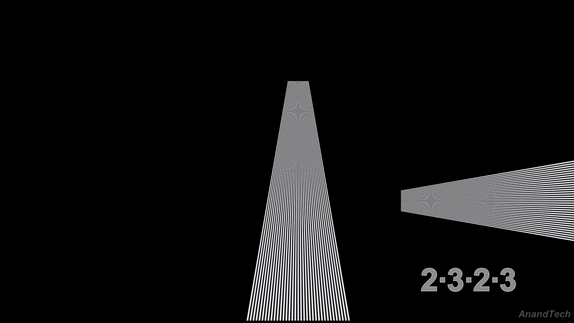
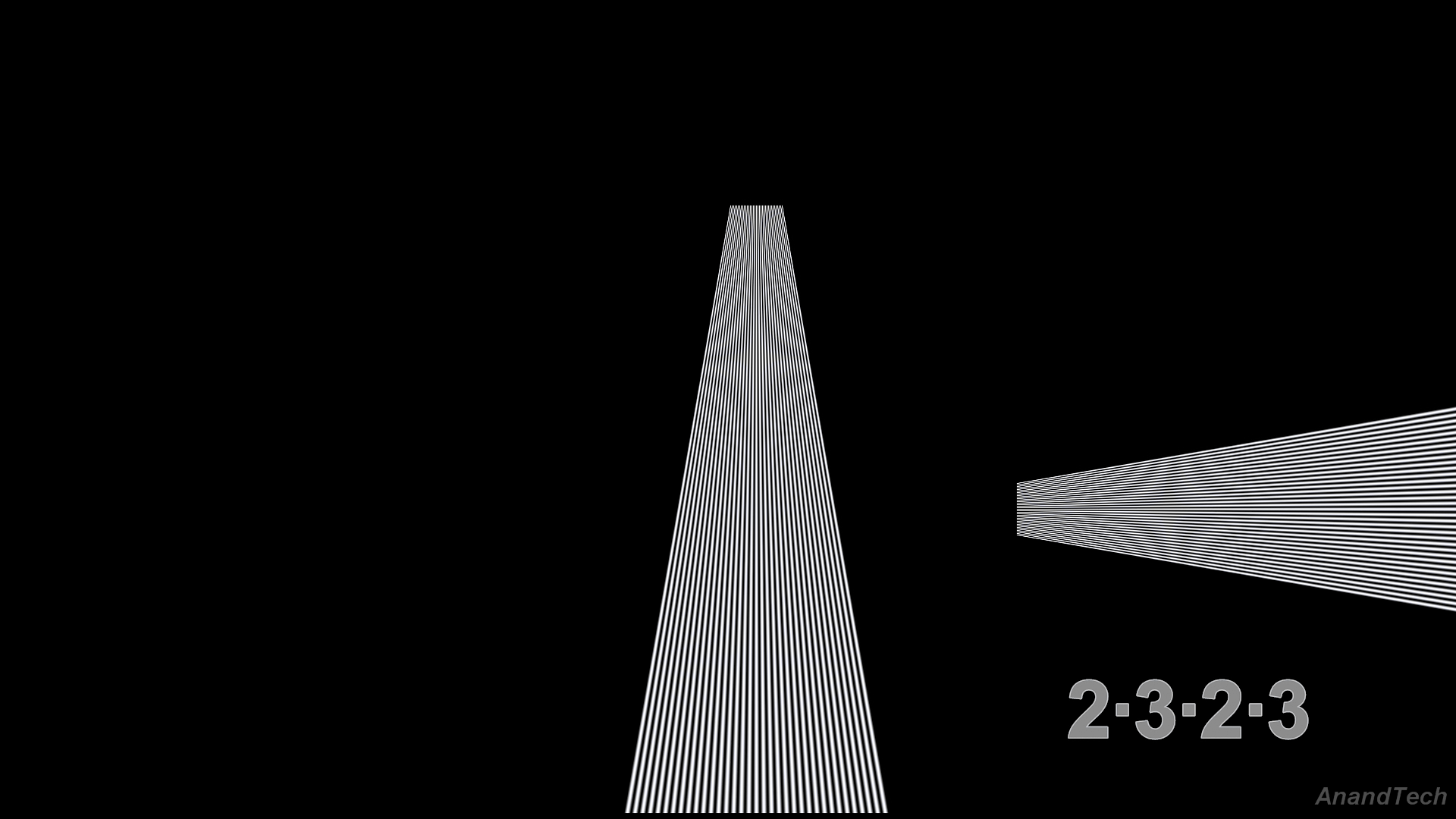
Cadence Locked
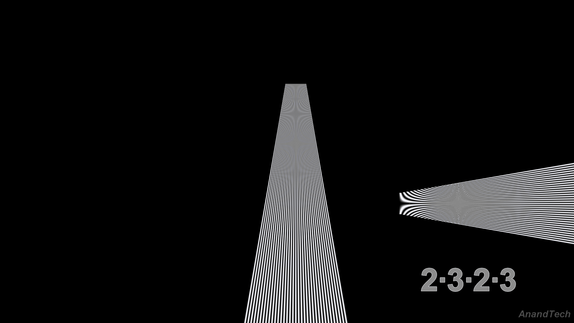
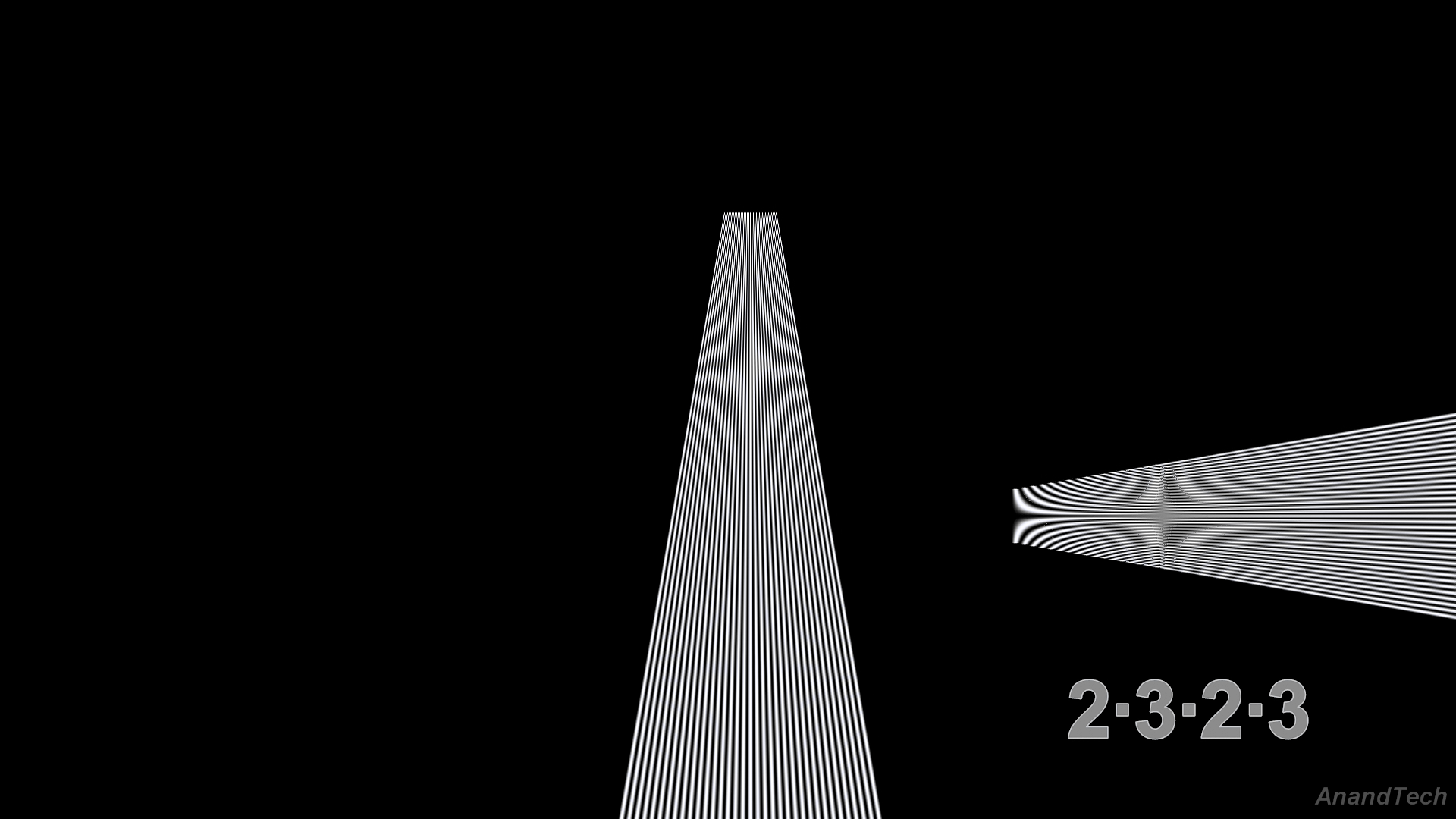
Cadence Lost
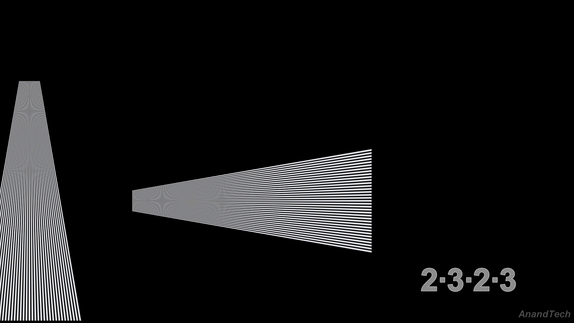

Cadence Regained
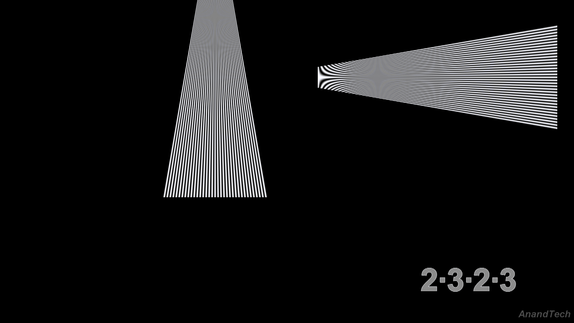
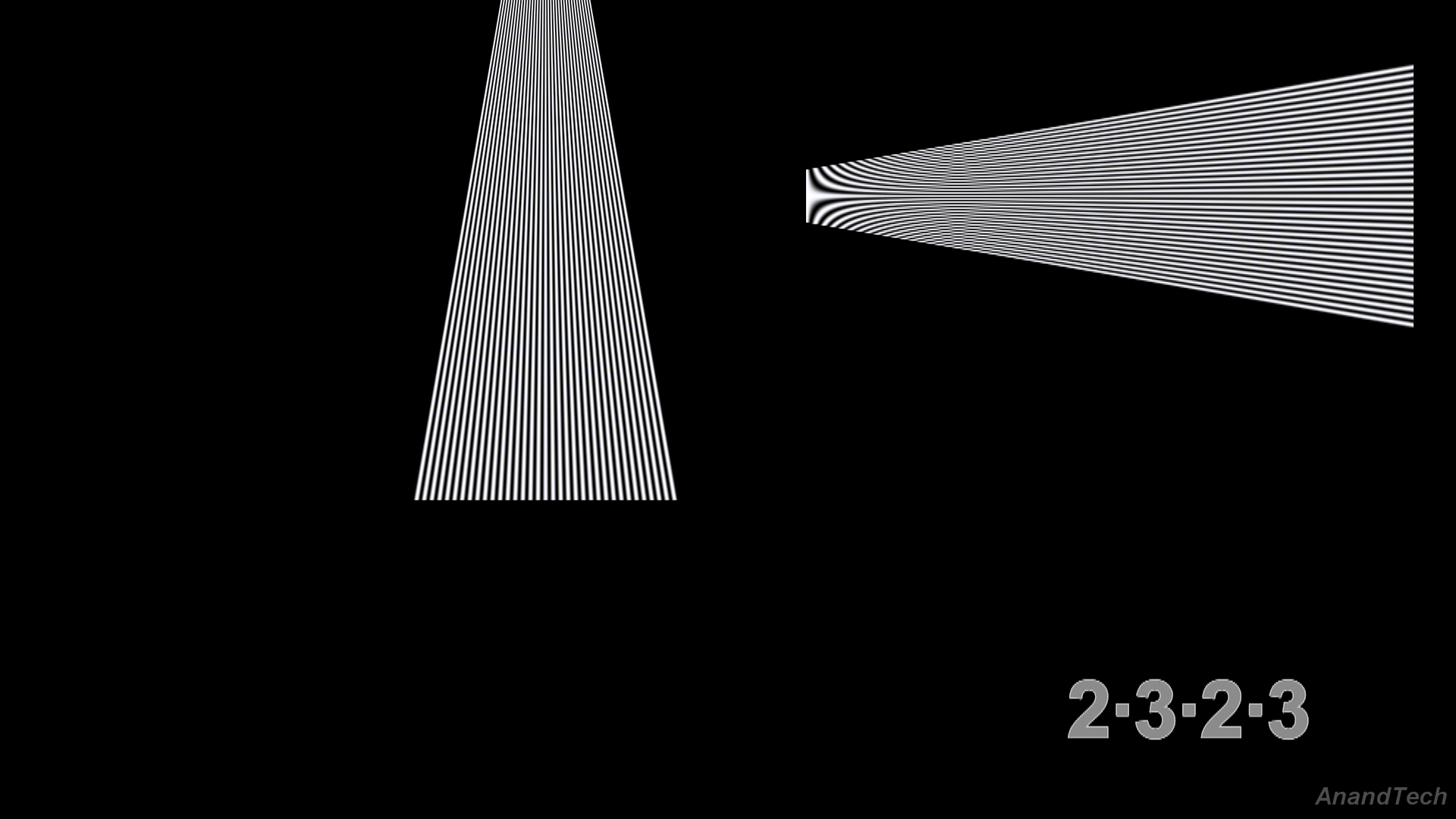
Cadence Permanently Lost
What is the takeaway from this experiment? Cadence detection will probably work for the more common scenarios, but don't be surprised if you encounter some streams which fail.
The more interesting aspect is the deinterlacing quality. Let us take a look at the artificial Cheese Slices first. A sample deinterlaced frame is provided below.
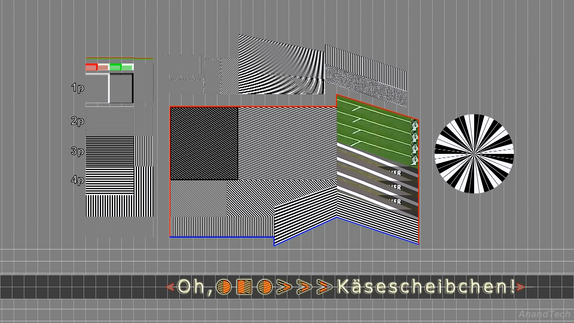
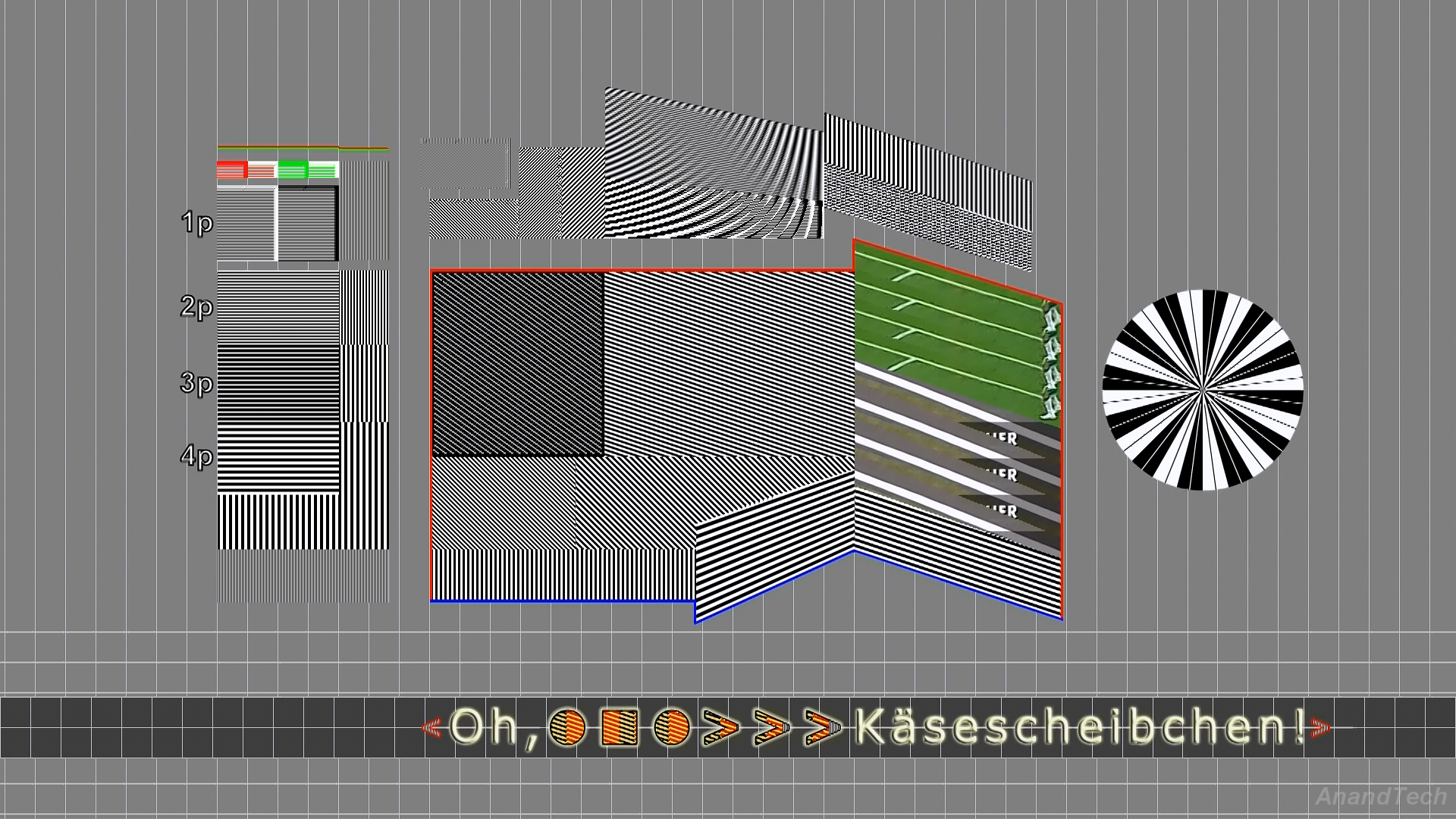
AMD 6550D's Vector Adaptive Deinterlacing
Now, let us compare Intel HD 3000 Graphics and the AMD 3550D with respect to the various deinterlacing aspects.
Deinterlacing - Video Reference:
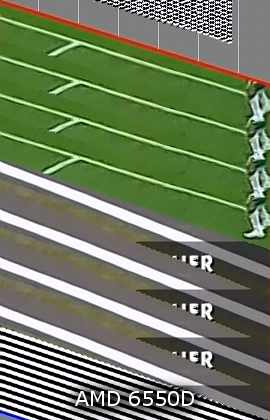
| AMD 6550D | Intel HD3000 |
Deinterlacing - Cheese Slice Ticker:

| AMD 6550D | Intel HD3000 |
Deinterlacing - Noise Response:
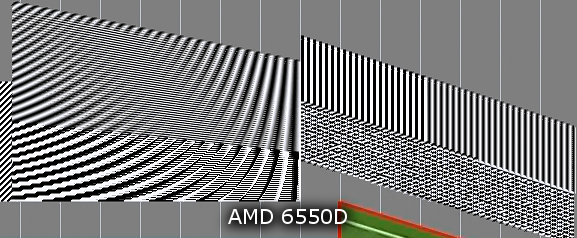
| AMD 6550D | Intel HD3000 |
Deinterlacing - Algorithm Type:
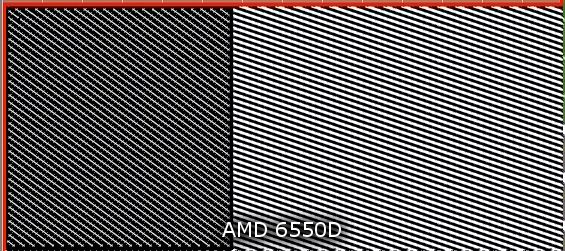
| AMD 6550D | Intel HD3000 |
Deinterlacing - Disc Test:
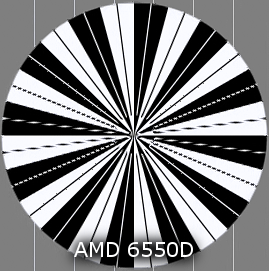
| AMD 6550D | Intel HD3000 |
Except for a certain segment in the noise response section, it looks like the AMD algorithm works much better than Intel's for the Cheese Slices test.
How does edge adaptive deinterlacing work? Here are screenshots made while playing back the boat clip from S&M on the Intel HD 3000 and the AMD 6550D.
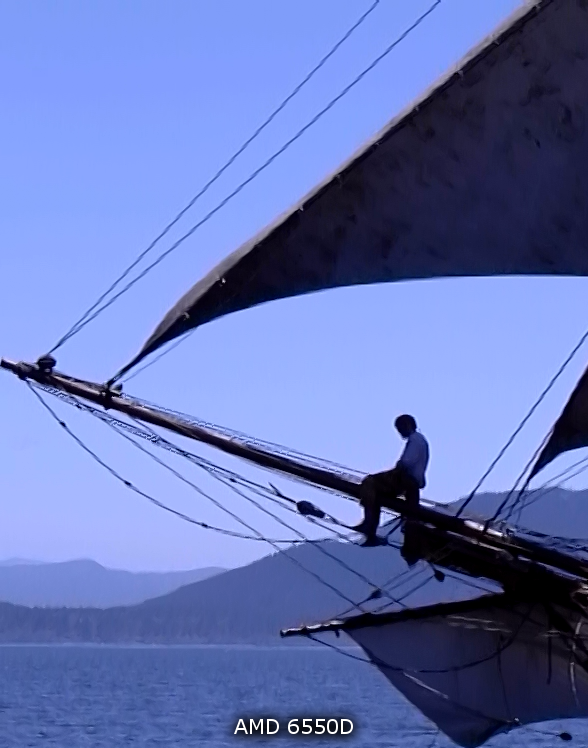
| AMD 6550D | Intel HD3000 |
From a deinterlacing perspective, the AMD 6550D looks better. However, the default video post processing settings with ESVP seem to wash out the details (for example, near the shoreline) when compared to the Intel HD 3000.










104 Comments
View All Comments
ckryan - Thursday, June 30, 2011 - link
There's lots of good stuff to do with a GPU that doesn't involve games; unfortunately, it seems like that is the only thing AMD had in mind for the Llano GPU. It's unfortunate, since running a discrete GPU with Llano in its desktop form just seems to make Llano pointless. In a laptop you at least get decent game performance at low screen resolutions.My enthusiasm for the future of Llano isn't diminished, but strangely, it seems that Llano makes a cheap Phenom II + dGPU seem like a much better idea than it was yesterday.
Still, with some Bulldozer cores, improved GPU section, and some better drivers will go a long way to making Llano mainstream vs. a super-niche product for the desktop.
duploxxx - Thursday, June 30, 2011 - link
a super niche product for the desktop..... did you ever went to any large electronic shop? it's full of these kind of designs that you brand "niche". Check few OEM very soon they will all bulk this kind of Liano setups.... just like Brazos was a success this will also and already a major reason why intel introduces the 2105 just at release of Liano.... but the HD3000 over HD2000 remains crap.L. - Thursday, June 30, 2011 - link
You don't get it, the guy above is right !!!It's a super-niche product, for the biggest niche there is in the whole consumer market, normal people.
Gee AMD ... bad idea really ;)
Ananke - Thursday, June 30, 2011 - link
:) Llano is exactly what the mass-consumer grade computer market uses and needs. That's 99.5% of the total market. The other negligible 0.5% is enthusiast market, where most of the AnandTech readers belong. Intel is still king there.therealnickdanger - Thursday, June 30, 2011 - link
"However, this leads to increased expectations like support for full post processing on Blu-ray videos."Did I misunderstand the comment?
Assuming a faithful transfer from film (16mm/35mm/65/70mm) to Blu-ray (1080p24), there should be absolutely no reason to apply any post-processing to a Blu-ray. The worst transfers are those cases where the studio applied processing prior to encoding on the Blu-ray, and then there is no recourse to undo the effects. With only a handful of examples of low-budget or foreign films, there are no interlaced Blu-rays. And then, you would only need deinterlacing, not post-processing. Any artificial sharpening, coloring, or smoothing will ultimately degrade picture quality, not improve it. Outside of playing back Blu-rays in the proper color space and eliminating judder, not much else should be done to them.
ganeshts - Thursday, June 30, 2011 - link
Sorry if I wasn't clear in this respect. I had also mentioned in the HQV section that we believe Blu-rays don't need post processing.First, there are a lot more interlaced Blu-rays than we would actually expect. Loads of nature documentaries and concerts are available in 1080i60. While the former ones are mostly VC-1, the latter Blu-rays are all H.264
AMD's main stance with respect to not supporting 1080p60 camcorders was the fact that they want to target the Blu-ray market mainly. Now, 1080i60 is less demanding than 1080p60, and is also present in many camcorders which are already in the $200 - $300 range. If Llano GPUs don't support post processing on 1080i60 fully, I think it is a long way off before they start supporting 1080p60 decode along with post processing. So, the 'even for Blu-rays' comment is meant to stress that aspect rather than mean that we actually need the post processing for Blu-ray videos. (Local files were the main target of my post processing tests)
therealnickdanger - Thursday, June 30, 2011 - link
Understood, thanks for taking the time to respond!StormyParis - Thursday, June 30, 2011 - link
for a very detailed review. I don't know much about HTPCs to start with, and I'm left a bit overwhelmed and confused, though.First, I really don't think the current Llano is meant to be used with a discrete graphics card. I think the whole point of the product, and the only situation in which it's worth coping with their underpowered CPU / higher power draw, is if I actually take advantage of their GPU.
Second, I'm not really clear which issues are fixable in software, and which will stay. Actually, I'm not really clear which issues are important, and which aren't.
Third, It'd be nice to have a hint about what lower clocks / core counts will do. I'd rather use 65W parts for small enclosures, and I have the feeling that wouldn't change much, but I'm not sure.
geniekid - Thursday, June 30, 2011 - link
Sounds to me like, if they fixed their software issues, AMD would be the preferred platform for HTPC.ganeshts - Thursday, June 30, 2011 - link
Yes, let us wait and watch for a couple of driver releases